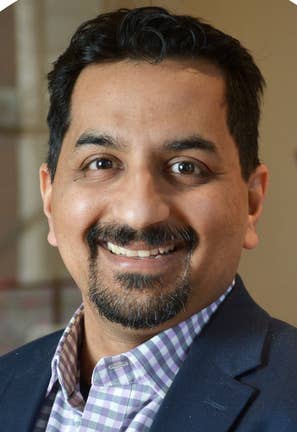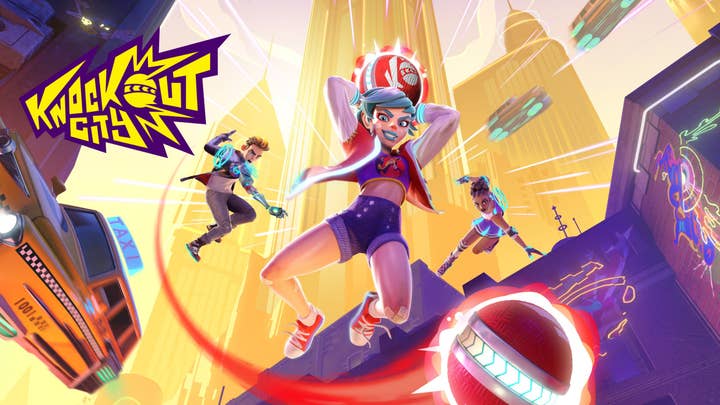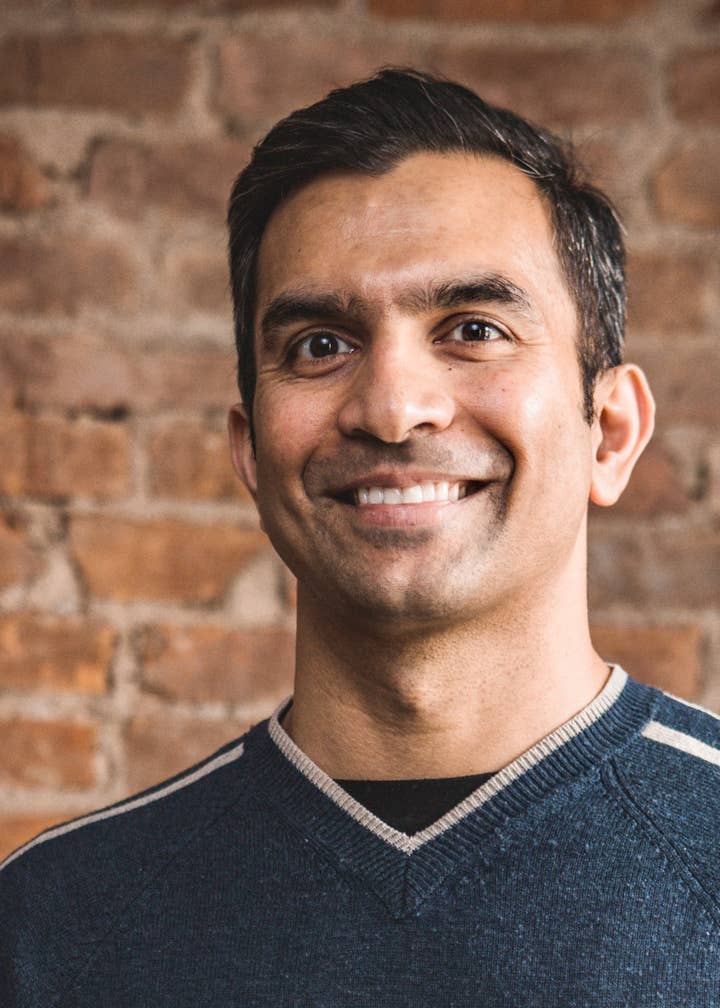The Bala brothers' guide to finding the magic
At GDC Showcase, the Velan Studios founders detailed their business model, fuelled by divergent thinking
Velan Studios was created in 2016 by Vicarious Visions founders Guha and Karthik Bala with the ambition of developing "breakthrough experimental games and new kinds of experiences."
Five years down the line, it's fair to say no one really expected their vision to take the form of Mario Kart Live: Home Circuit.
GamesIndustry.biz talked to president Guha Bala last October about reinventing Nintendo's best-selling racing franchise for augmented reality, and he said that the team "picked a problem [they] thought [they] could come up with a unique solution to, that delivers an amazing experience."
Velan Studios is now working on competitive dodgeball title Knockout City, which has been in development for four years and will be released via the EA Originals label this May.
Figuring out unique ways to play is at the core of Velan's vision, as demonstrated by the brothers' talk at GDC Showcase this week. Entitled "Making Magic: A Business Model for Divergent Thinkers," it revolved around the exploration of Velan's business plan, which Guha explained boils down to four steps:
- Build an awesome team
- Find the magic in something new that the team is really passionate about
- Figure out the go-to-market strategy and partners
- Build it, ship it, evolve it with the community

"But what we found overall is that simple is hard," Guha said. "So it's always easier said than done. A simple plan has a shot at working because there's a million details to execution. Complex strategies tend to fail because you're stacking complex strategies on top of complex execution. So the most important thing for you to do in all this is to be able to say: how simple can I make my effort, my proposition?"
The Bala brothers highlighted two types of creative thought processes: divergent thinking and convergent thinking. The latter, they claimed, is the model that is the most widely used in the games industry.
Convergent thinking focuses on finding out the most effective, logical way to tackle a challenge, while divergent thinking focuses on the exploration of several solutions, and is typically used to generate creative ideas.

"They're starkly different approaches to creativity," said CEO Karthik Bala. "It's not that one is better than the other, but they serve very different goals. And we hear everyone talking about innovation. But what does that really mean? Is it making something that exists better or doing something totally new? A lot of great developers focus on being the best in their craft. This often overlaps with the goal of being best at what exists."
That means focusing on existing game genres, using behaviours that are established and easier for consumers to understand, for instance. Most franchise extensions are based on these principles, Karthik Bala said, as they make it easier to plan, communicate, fund, and publish.
"We quickly discovered that most of the commercial opportunities that are out there were built on convergent thinking rather than divergent," Guha added. "There's a lot of reasons why. Convergence is iteration and craftsmanship. It's the only way to become and stay the best in class in a very competitive marketplace."
But there's always room for something new, the brothers argued, especially with the industry now being more fragmented. In the past, access to capital, distribution, marketing, and PR was controlled more closely by big publishers.
"When it comes to new types of experiences, there's always new capital," Guha added. "There are different distribution options virtually for any business model and there's world-class marketing PR that's looking to support the best new creative. So we frankly don't see many advantages of being within a single large organisation, especially if you want to get something done that's new. They're multiple routes for unique experiences, if you're deliberate in your choices."
Find simple, defensible and scalable ideas
The Bala brothers shared how they define what makes for a good, innovative idea in games. The key to ideas is that they remain simple, Guha said.
"By simple it means they're really easy to get, easy to understand, accessible. It's something that is emotional or captivating within the first few minutes of play. It doesn't take a long exposition to really understand what it is and say: 'Ah, this feels different'.
"When it comes to new types of experiences, there's always new capital"
Guha Bala, Velan Studios
"But simple doesn't mean it's not complex under the hood -- a lot of times, simple ideas haven't been done before because they're super hard to do."
Then your idea needs to be defensible: find a secret sauce that makes it hard to copy, Guha continued.
"I remember when the first couple of battle royales came out and we went to E3 with our working prototype for Knockout City, so many people thanked us for not showing them another battle royale," he laughed. "There were about 50 to 100 other battle royales in development because the ones that had been established had quickly gotten to scale. And the new ones that were coming out were just competing for diminishing audiences. So think about secret sauce, why it is hard to copy, but also what are the setup capabilities on your team that makes your team the best to do it."
Finally, your idea should be scalable, in at least two aspects of player engagement:
- Can it engage a player for hours, days, weeks, and months?
- Can it engage a high number of players? Can you do hundreds of thousands of users? Can you go to millions of players?
Divergence starts with the team
But Karthik explained that when they started Velan Studios, their initial focus actually wasn't on a specific game idea, but about defining the type of culture they wanted to cultivate and the type of team they wanted to assemble.
"We really wanted to bring together veteran talent as well as new talent who are all about going after bold new ideas," he said. "That kind of divergent thinking -- it starts with the team. So it's really around building a core team and giving them the room to explore.
"The team needs to have that permission to fail, so they can actually take some bold steps"
Karthik Bala, Velan Studios
"These are folks deeply curious about play patterns -- they're not just dreamers, but they're makers. It's all about trying to have the smallest possible team to find an atomic core unit of fun that makes the game work. Above all, the team needs to have permission to fail. Failing needs to be seen as equally as good an outcome as success. It's when you don't know which one it is that makes it really difficult.
"But the team needs to have that permission to fail, so they can actually take some bold steps. The litmus test is: can the team build it and hand the controller over to someone else to feel the magic? People just stop playing and they walk away or they can't let go? That's a really important metric."

Invest in R&D
Once you have the team and the idea, then it's really about the structure you give it all and the research and development process, Karthik added.
"Quite frankly we place minimal value on pitch decks -- it's really about, 'Let's go prototype, build something in and prove if something's fun or not.' And it's really investing against the magic that the team finds in these core interactions that are really novel, unique and different.
"You've got to build it and iterate on it until you can put it in outsiders' hands and subject it to a peer review, and see what other people think. If it's about moment-to-moment mechanics, you don't need a lot of R&D, you can focus down on what is really necessary to prove or disprove a concept. And you iterate as rapidly as you can -- unless the game is about an aesthetic that you're trying to define and that's what's unique about it."
"Sometimes it's really hard to know when you should cut bait on an idea and move on or keep going"Karthik Bala, Velan Studios
Karthik warned that you may need independent funding for your R&D, distinct from the actual project fund, as the prototype might not work out and you may just have to throw it away. Being able to find different funding sources during the R&D period is important, as the process might be time consuming.
"With Mario Kart Live: Home Circuit, when prototyping, it was not about making a Mario Kart game. It was actually inspired from drone racing and it was about bringing this visceral feel of driving an RC car in the real world, but making it drive as easy as a video game car. This was a self-funded prototype, which was key. We actually found that magic kind of early -- it was about a seven to nine months window.
"With Knockout City, we had this core idea of throwing and catching a ball and every three months or so we thought we had this core figured out, we'd put it in the hands of trusted peers and it failed. It wasn't fun, there were problems with it. But the team kept at it and it actually took 18 months to really nail that core experience that felt great in people's hands.
"Sometimes it's really hard to know when you should cut bait on an idea and move on or keep going, and at the end of the day, you have to trust the team and decide as a team whether you want to keep going or do something else."
Creative should drive your go-to-market strategy
Your idea and its uniqueness should be what drives your go-to-market strategy, rather than the opposite, which would be to create a product based on the market, Karthik continued. Don't decide on a strategy before the core idea of the product has been prototyped because a unique experience might require a unique approach.
"We believe that the creative should drive the go-to market strategy. And this is often the opposite of what actually happens in large-scale companies. Companies often focus on the market and then say: 'What product should we build?' as opposed to [figuring] out something special.

"When you do have that prototype that's really special and unique, then you figure out what the go-to-market strategy is. Sometimes you can go at it on your own, other times you need the right partner to be able to take it out to market. If you've proven the fun and you can put in their hands, it's a lot easier to go find the right partner where the vision clicks [and] they really understand the game experience and the audience."
You can also do it independently, in which case Karthik advised to start small and to be really community-focused, putting it in the hands of players as quickly as possible. Each game will have its own set of go-to-market challenges.
"With Mario Kart Live, we had a hardware and software experience that we needed to build at scale and Nintendo was the right partner for that project," he said. "With Knockout City, it's a digital-only live service game with a lot of infrastructure requirements to pull that off, and we talked to a number of different potential partners when we had our prototype and the EA Originals label became the right partner for us. The ultimate goal is getting it into gamers' hands -- that's what we're really trying to do."
Making it for real, and evolving it
You've got your idea, a team that found the magic in it and built a prototype, as well as a go-to-market strategy. Now all you got to do is actually "make this sucker," Guha laughed, adding that this is where the dreamers need to become doers. And that's also when you need to switch from divergent thinking to convergent thinking.
"Building and shipping it, and then evolving it, is really how we think about this sort of a complete package. Building is iterative, it extends beyond launch. And part of that is because player feedback is key. You can even focus test it along the way, but you don't really know until your experience is out in the wild.
"We put track creation into Mario Kart Live, but we were astounded [to see] so many makers out there that are building amazing courses and making the experience really their own. We knew that building was a fun part of what we're doing, we didn't think that the community would appraise it in quite the way that they wound up doing it."
Budgeting and planning appropriately is crucial at this stage. As Guha put it: everything takes a lot longer and costs more than you think -- so build some safety margin in your model.
"What we think we need to do is determine the scope of the experience that feels complete at launch but has the potential to grow," Guha added. "It represents the value for your pricing model but then you can evolve it from there.
"Fundamentally it's about finding your audience, listening and evolving it with a player community. And all this is a combination of iteration, about being as rigorous as you can be patient as you can be, and getting the thing out."

